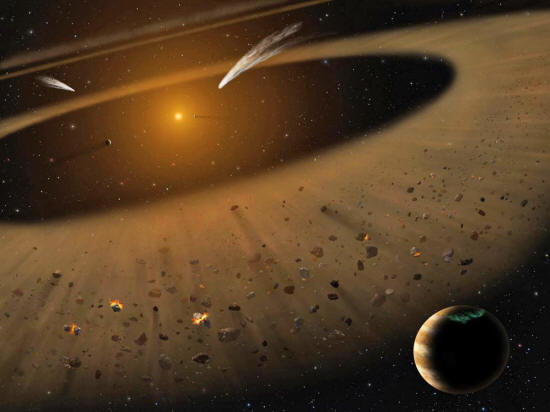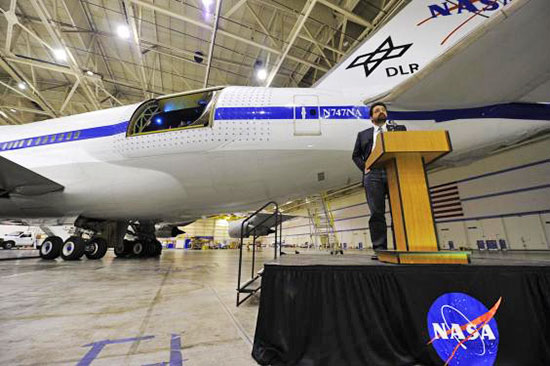|

by Andrew Griffin
03 May 2017
from
Independent Website

The solar system around the star Epsilon Eridani
looks
remarkably similar to the one
around
our own sun
NASA
The system could help us
learn
how our own planets were
formed...
A solar system near to us is "remarkably similar" to our own,
according to astronomers.
The discovery could have huge implications for our understanding of
how our own planet and its neighbors were formed.
Found just 10 light-years away in the
constellation Eridanus, the
scientists say that the solar system around the
star Epsilon Eridani looks
remarkably similar to the one around our own sun. And it's the
closest that includes a star that's like a youthful version of our
own.
Though Epsilon Eridani looks like our own star, it's just one-fifth
the age.
And so looking at it is
like looking back in time.
"This star hosts a
planetary system currently undergoing the same cataclysmic
processes that happened to the solar system in its youth, at the
time in which the moon gained most of its craters, Earth
acquired the water in its oceans, and the conditions favorable
for life on our planet were set," wrote astronomer Massimo
Marengo, one of the authors of the new paper, wrote in a summary
of the project.
The new paper (The
Inner 25 au Debris Distribution in the epsilon Eri System)
uses data collected by Nasa's Stratospheric Observatory for
Infrared Astronomy, or
SOFIA, which is housed in an
aircraft and can take detailed pictures by aiming at distant stars.
Astronomers then observed
the mission and picked through infrared data about the star, which
also featured in
Babylon 5.

German telescope engineer Thomas Keilig
of the
German Aerospace Center (DLR) speaks below the telescope bay
of the
Stratospheric Observatory for Infrared Astronomy (SOFIA),
a
cooperative venture between NASA and German scientists,
where a
2.8-meter (98-inch) telescope has been mounted
inside
a specially modified Boeing 747
(Getty)
They found that the star is surrounded by two structures - an inner
and outer disk - with a gap that seems to have been created by
planets.
"But we can now say
with great confidence that there is a separation between the
star's inner and outer belts," Marengo said.
"There is a gap most
likely created by planets. We haven't detected them yet, but I
would be surprised if they are not there. Seeing them will
require using the next-generation instrumentation, perhaps
NASA's 6.5-meter James Webb Space Telescope scheduled for launch
in October 2018."
All of that work could
help give astronomers a look at the very ancient past of Earth and
the planets that surround it.
"The prize at the end
of this road is to understand the true structure of epsilon
Eridani's out-of-this-world disk, and its interactions with the
cohort of planets likely inhabiting its system," Marengo wrote
in a newsletter story about the project.
"SOFIA, by its unique
ability of capturing infrared light in the dry stratospheric
sky, is the closest we have to a time machine, revealing a
glimpse of Earth's ancient past by observing the present of a
nearby young sun."
|



